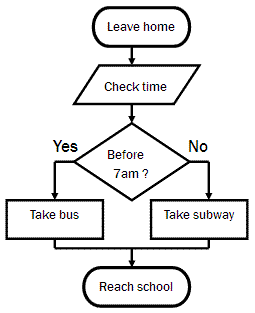To improve your success rate over time the most helpful two things are probably:
1. Commit to a minimum system you can maintain long term
 Continuously finding tiny improvements and building on them is the easiest route to success. Solve problems faster. See opportunities easier. Remember that a penny doubled for a month is over a million dollars. To get this benefit (that I call “compounding”), you must build on what you learn and know over time.
Continuously finding tiny improvements and building on them is the easiest route to success. Solve problems faster. See opportunities easier. Remember that a penny doubled for a month is over a million dollars. To get this benefit (that I call “compounding”), you must build on what you learn and know over time.
Here’s three simple steps to make that easy:
- Journal inside of a planning system.
Keep notes in an app like WorkFlowy or Asana, or a to-do binder. - Have an always-fixed place for important items.
Keys, tools, vitamins, etc. - Use reminders and records.
All online calendars offer notifications. Paper calendars usually have reminder systems built in. Don’t keep stuff in your head, write it down and turn it into a reminder or a record.
2. See adjustments, not problems or solutions
 Ever swerve (adjust your course) to avoid a pothole? Was that a problem or solution? Does it matter?
Ever swerve (adjust your course) to avoid a pothole? Was that a problem or solution? Does it matter?
The best managers of their own goals are people who adjust their course easily as they go. They are already on the other side of the pothole in their mind. They accept the work of small adjustments, rather than getting caught up in problems or solutions. Small adjustments (miss the pothole) prevent big adjustments (needing to repair your car, your finances and your attitude).
There’s also an easy and fun third step that I recommend:
3. Continuously collect and rank success principles.
 See Colin Powell’s 13 Rules or read Jack Canfield’s book “The Success Principles” for an idea of what I mean.
See Colin Powell’s 13 Rules or read Jack Canfield’s book “The Success Principles” for an idea of what I mean.
One of the simplest things you can do to be successful is rank a list of success principles, and improve the list over time. A famous one from Colin Powell’s list: “Perpetual confidence is a force multiplier.” One I like from Jack Canfield is “99% is a bitch, 100% is a breeze.” A friend applies this to their savings strategy. They say of their savings: “That money is dead to me.” They don’t think about their savings. They ignore it. It is 100% saved, not 99% saved but “maybe I can spend some sometimes”. A 99% attitude fails in the long term, and is more stressful in the short term.
Since the main cause of your results is the answer to this question, “What do you think you are doing?”, it’s benefiicial over time to get better and better answers.
If you want to take it further, here are two more useful steps:
4. Continuously collect and rank a roadmap of ideas and goals
Ignore the past, including your own ideas. Always be summarizing your top ideas / tasks / goals now. Don’t obsess over planning or organizing, obsess over highlighting priorities, summarizing, and taking action. If you keep summarizing, your past ideas won’t be lost, they’ll be what your current ideas are built on.
So make short-, medium- and long-term plans, but keep updating them. Don’t get mired in old ideas.
Here’s a related success principle: When nothing goes according to plan, congratulations, you’re in business. Churchill and Eisenhower both said, in nearly identical words, “plans are useless, planning is essential.” You can learn a lot from business and military mission plans. But mostly, you can learn a success mindset.
 5. Occasionally update a personal role Mission Statement
5. Occasionally update a personal role Mission Statement
How you answer questions like “What am I doing?” or “What is important in life? can limit or expand your potential. A mission statement exercise can put some of your best wisdom into plan format.
A mission statement is commonly five statements, sometimes with key priorities detailed for each. (Whenever you’re updating your mission statement, it’s a good idea to update your ranked success principles and roadmap at the same time.)
The first statement, Mission, is the powerful “Why?” that creates your success. Vision is describing what success looks like, the big picture overview of the work to be done. The other piece is your top three objectives/goals/priorities. (If you want to include a “Values” statement, that can be included in Mission or made separately).
While for a business, “Care about customers/make profit/sell things” might be the frame of reference for the first three statements, personal roles can be things like spouse, parent, mentor, etc.
Because we all manage and interact with people, money and things in our life, I also suggest you consider seeing yourself in the role of management mentor. Here is a sample personal mission statement of that type that may give you food for thought regardless of what role you see yourself in:
Mission: Give people and plans space to think and grow.
Vision: Continuously connect (stay in touch) with people and plans (mentor people, adjust plans).
Priority 1: Mentor people. Key priorities:
- Study mentoring. Develop a system and improve it. Always keep people in mind.
- Continuously communicate and connect personally with all stakeholders.
- Relate things to a larger “why” and a bigger picture “what”.
- Get feedback by asking and listening; Summarize people’s feedback back to them in real-time.
- Reduce conflict and stress for people. Get better at this.
- Never use power or judgement. People retaliate both short term and long term. Ask and listen, then listen some more. Wear them out with listening when conflict is high. Study priority #3 if change causes you stress or judgement. Connect and listen instead of complain and explain.
Priority 2: Manage vision. Key priorities:
- Study planning and management. Develop a system and improve it. Measure everything that matters. Always keep the big picture in mind.
- Manage cash flow and budgets (profit without cash on hand puts you out of business)
- Be creative and opportunity-minded, i.e. find creative opportunities to improve plans, people and stress.
- Estimate profits in the next 3-9 months. Cash flow handles the short term, profits handle the mid-term, planning handles the long-term.
- Improve plans and planning.
Priority 3: Find simple adjustments:
- Study creativity and common adjustments. Be as creative and fast as possible while keeping priorities 1 and 2 in mind.
- Develop this mindset: If you find a cost, task or adjustment to plans or perspectives, make a note and move on. With this mindset, projects have many adjustments, but few problems.
- Ask people to find opportunities and suggest changes.
- For things that repeat, adjust the plan so that people’s work is simpler and more effective.
- Seek fast, small adjustments. Common examples:
- Is it something that can be anticipated or might repeat? Then it’s a non-issue, just your regular job of adjusting the plan
- Is easy work a solution? (Like arriving earlier.) Then it’s a simple to-do item.
- Can you pay a little to fix it? (Like paying someone to arrive earlier.) Then it’s a cheap cost. (Famous quote “If money fixes it, it’s a cost, not a problem.”)
- Does a free, simple plan change fix it? (Like moving a few minutes of work to a different location so things can be overseen in person.) Again, it’s a non-issue, just your regular job of plan adjustment.
- Can you connect with people to understand them and their problems better, so that they can take over managing the change? Again, it’s your regular job of helping people do a better job.
- If the result is safe and good, although the process is messy (and what process isn’t?) and you can just not stress about it, this can be the simplest solution of all…as long as you don’t push stress onto someone else. You can always make a different adjustment later.
- Is it something that can be anticipated or might repeat? Then it’s a non-issue, just your regular job of adjusting the plan
- When a fast, small adjustment is found, move on quickly.
Note: “Mentor” doesn’t mean “manipulate:” Just keep in touch.
f0u1h4
“Julia’s Garland” (fr. Guirlande de Julie)
from lat. manus – “hand” and scribo – “I write”) ]
Since the era of Charlemagne
European glory, and even after
“Julia’s Garland” (fr. Guirlande de Julie)
“Julia’s Garland” (fr. Guirlande de Julie)
55 thousand Greek, 30 thousand Armenian
bride, Julie d’Angenne.
among them acquired “Moral
Since the era of Charlemagne
handwritten books were made,
Europe, and in Ancient Russia
Libraries of the Carolingian era). IN
among them acquired “Moral
secular brotherhoods of scribes.
Century to a kind of destruction:
handwritten books were made,
consists of the book itself
reproduced by hand, in contrast
new texts were rewritten
Europe, and in Ancient Russia
among them acquired “Moral
elements (case, binding).
written on the parchment was scratched out
works of art.
Duke de Montosier
secular brotherhoods of scribes.
so expensive material